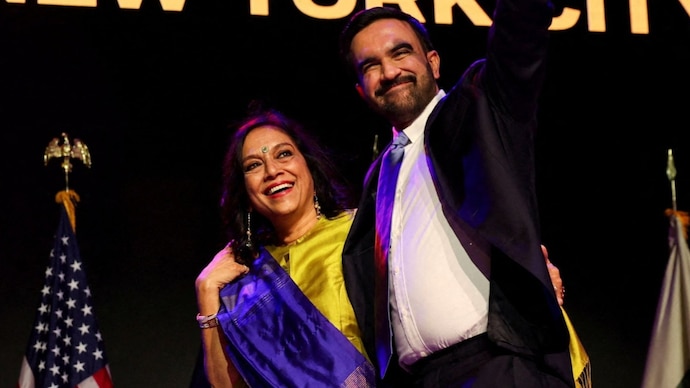Who is Mira Nair
Mira Nair was born on October 15, 1957, in Rourkela, Odisha (then Orissa) and later lived in Bhubaneswar.
She studied sociology at Delhi’s Miranda House and then went on to Harvard University where she studied visual and environmental studies/filmmaking.
Her filmmaking career spans documentaries and feature films; she is one of the most prominent Indian-born filmmakers working internationally.
Some of her most acclaimed films include:
- Salaam Bombay! (1988) – nominated for the Academy Award for Best Foreign Language Film.
- Monsoon Wedding (2001) – which brought her wider global recognition.
- The Namesake (2006) – exploring diasporic identities.
She also founded organisations such as the Maisha Film Lab in Uganda to support young African filmmakers, and the Salaam Baalak Trust in India to support street children.
Why she’s trending now
There are a few converging reasons why Mira Nair has come into the spotlight:
- Family and Political Connection
Her son, Zohran Mamdani, is making headlines in New York politics, which draws renewed interest in Mira’s story, worldview and influence.
Because of this, media are revisiting her legacy not just as a filmmaker, but as a parent and cultural figure whose values shape a newer generation. - Cultural & Global Storytelling Resonance
Mira’s films deal with themes of migration, identity, cultural hybridity and social justice. At a time when such topics are increasingly central to global conversation (especially between India, diaspora and Africa), her work is seen as prescient and highly relevant.
For example, she has said she felt like an outsider between worlds (“na ghar ka na ghaat ka”) during her early years — and that outsider vantage shows up in her films. The Times of India - Reappraisal of Her Body of Work
With streaming and retrospectives, there is renewed interest in landmark films from the 80s-2000s that bridged national cinemas. Mira’s oeuvre is part of that wave: films like Salaam Bombay! and Monsoon Wedding are being reassessed for their historical, cultural and cinematic importance. - Her Role in Mentorship & Global Film Infrastructure
Her work beyond directing — in training emerging filmmakers, building film labs, mentoring — is increasingly recognized. In a time when film voices from Africa, India, diaspora are demanding space, her early efforts in that direction get spotlighted.
What makes her work distinctive
- Fusion of documentary sensibility with narrative cinema: Her early documentaries laid the ground for feature films grounded in realism, yet emotionally accessible.
- Bridging geographies and identities: She moves between India and the U.S. (and other places), weaving stories that cross cultural silos.
- Crafting voices for the marginalised: From street children in Mumbai in Salaam Bombay! to immigrant experiences in The Namesake, she gives voice to people often overlooked.
- Bold formal and thematic choices: She has taken risks—both in subject matter (e.g., exploring diasporic love in Mississippi Masala) and in her career path.
Why you might care (and what we can learn)
- If you’re interested in global cinema, Mira Nair is a must-study example of a filmmaker whose work transcends simple national or genre boundaries.
- If you’re thinking about identity, migration, hybridity, her films offer thoughtful, complex portrayals rather than cookie-cutter narratives.
- For those in mentorship, philanthropy, film education, her model of setting up labs and trusts shows one way filmmakers turn cultural capital into structural change.
- For creative professionals or anyone navigating multiple worlds, her story — of feeling between worlds, making art from that vantage — may resonate.
Final thoughts
Mira Nair isn’t just a “successful Indian director” (though she absolutely is). She represents a bridge: between India and the world, between documentary and fiction, between culture and commerce, between the local and the global. Her resurgence in the public view now is about more than nostalgia — it’s about relevance. As our world becomes more interconnected, her themes of identity, dislocation, belonging, and storytelling matter even more.
Share this content:

